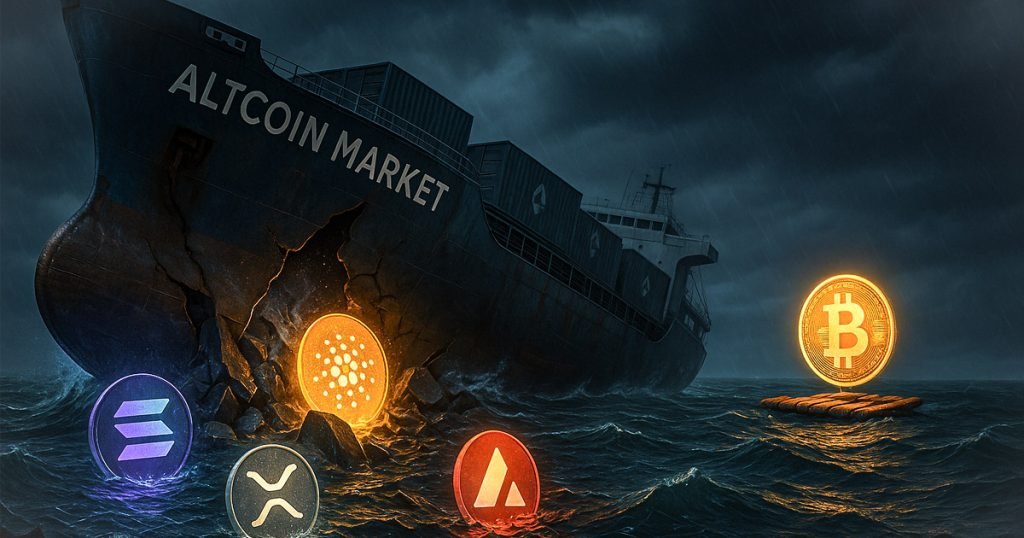The Intersection of AI and Crypto: Navigating the Future of Altcoins
In the rapidly evolving landscape of cryptocurrency, the advent of artificial intelligence (AI) has sparked a new wave of innovation and speculation. Guest contributor Shane Neagle from The Tokenist highlights the striking parallels between the NFT boom, the rise of memecoins, and the impending challenges faced by the altcoin market. This article delves into the oversaturation of digital assets, the transformative impact of AI on blockchain coding, and the future of altcoins against the backdrop of evolving market dynamics.
The Rise and Fall of NFTs: Lessons Learned
Once celebrated for their potential, NFTs (non-fungible tokens) witnessed a meteoric rise, peaking at nearly $24 billion in global sales shortly before the catastrophic Terra (LUNA) collapse in May 2022. The euphoria surrounding NFTs was so intense that institutions like JP Morgan estimated that the metaverse could generate annual revenues of $1 trillion within a decade. However, this optimism belied the reality of an oversaturated market, exacerbated by AI tools like Stable Diffusion and DALL-E, which enabled the rapid production of low-effort NFT collections. As the scarcity of unique digital collectibles evaporated, the NFT market faced a painful reckoning. This oversupply led to speculation fatigue among investors, offering a cautionary tale for the altcoin market as it grapples with similar risks.
The Parallel Dynamics of Memecoins
The memecoin phenomenon mirrored the speculative tendencies seen in NFTs, marked by a low barrier to entry and heightened hype. Despite rampant scams, such as rug pulls and pump-and-dump schemes, the allure of quick profits continued to draw participants into a chaotic market environment. The integration of AI in meme marketing and trading—through AI bots creating promotional narratives and sniper bots executing rapid trades—has only compounded the volatility of this sector. Such technological advancements amplify the potential for market bubbles, leading to fatigued investors and diminishing retail engagement. This raises important questions about the potential for similar exhaustion to permeate the broader altcoin market as AI increasingly shapes investment strategies.
Distortions in Developer Activity and Project Viability
Historically, the health of a blockchain project has been gauged through developer activity, signaling its long-term value and sustainability. However, the incorporation of AI into coding processes poses significant challenges to this metric. With AI systems capable of generating code and automating tasks typically performed by junior developers, the landscape of blockchain development could become littered with projects of dubious quality. As AI diminishes the entry barriers for new projects, concerns arise regarding the proliferation of low-utility tokens prone to market saturation. Moreover, AI-enabled tactics could manipulate metrics of developer activity, overshadowing the true state of project viability and complicating investment evaluations.
The Bright Side: Opportunities Amidst Challenges
Despite the potential chaos brought on by AI in blockchain coding, there are glimmers of hope. Notably, Bitcoin, backed by tangible assets and a robust proof-of-work algorithm, may emerge as a stabilizing force amidst a sea of less credible projects. As projects relying solely on AI-generated code struggle to achieve meaningful adoption, those with real-world applications will likely continue to flourish. Prominent frameworks that increase the transparency and verifiability of AI-generated information, such as OriginTrail’s Decentralized Knowledge Graph, also hold promise in combating distrust in the crypto landscape. Ultimately, AI may serve as a filtering mechanism, helping to identify and purge weaker projects, though it is important to note that many investors are still drawn to the fast-paced allure of risk-taking rather than diligent evaluation.
Erosion of Trust: Risks Ahead
With the rise of mass-produced, unaudited smart contracts, significant risks loom for altcoin investors. The potential for rug pulls and costly hacks may increase, eroding trust across the ecosystem. While initiatives like Karma3Labs’ on-chain reputation system aim to restore some measure of confidence, their effectiveness in achieving widespread adoption remains uncertain. As the crypto market becomes inundated with AI-driven projects demanding attention, investors may find it increasingly challenging to differentiate between trustworthy ventures and those intended solely for capital extraction, thus heightening the risk of disillusionment within the space.
Conclusion: Navigating the Crypto Landscape of the Future
As the integration of AI becomes more commonplace in the crypto world, investors must remain vigilant in navigating the complexities of the evolving landscape. While the convergence of AI and blockchain presents numerous opportunities for innovation and growth, it simultaneously raises significant challenges related to market saturation, project viability, and erosion of trust. In this context, discerning investors will need to exercise caution, grounding their decisions in thorough analysis and sound risk management practices. The lessons learned from the NFT and memecoin debacles underscore the importance of vigilance—an essential trait for anyone seeking to thrive amidst the exciting yet unpredictable world of cryptocurrencies.


